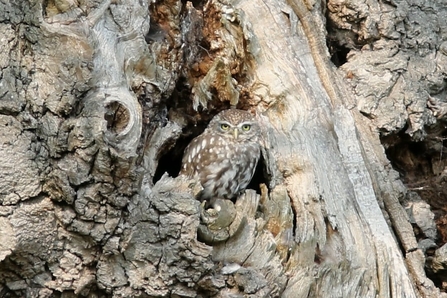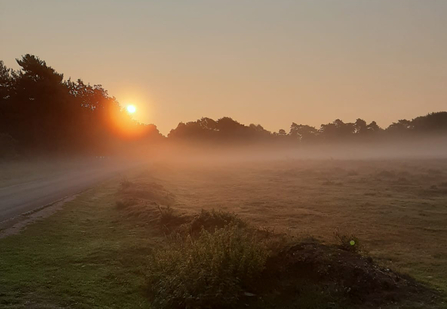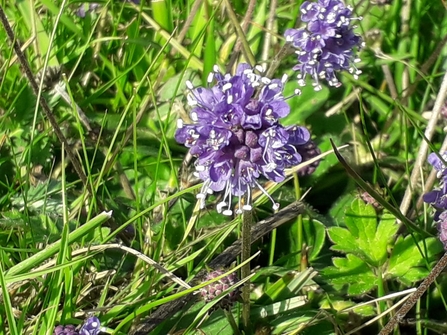Weekly wild news from our reserves, 25 September 2020
Little owl - John Yaxley
This striking ivy bee was seen this week at Lound Lakes. Ivy bees emerge at this time of year to feed on ivy flowers. They are solitary bees which nest in loose or sandy soil on south facing banks, sometimes with hundreds of nests in the same area. Ivy bees were first recorded in the UK in 2001, when they migrated from Europe, and are now widespread in the south of England.
Starling murmuration at Hen Reedbeds
A small starling murmuration has been seen at Hen Reedbeds this week, for the best chance of seeing them we recommend visiting the reserve just before dusk. Numbers should start to increase over the next few months as we head towards winter.
Finishing touches at Carlton Marshes Visitor Centre
We hope to have our new visitor centre, trails and hides at Carlton Marshes all open by mid-October (C-19 situation depending!). Here's a sneaky peek into where we are right now...
Little owl
This stunning little owl was captured perched in an old oak at Redgrave & Lopham Fen. It is the UK’s smallest owl, not much bigger than a song thrush but chunky in appearance. The upperparts are grey-brown and the plumage is often spotted with white.
Richard Young, Valley Fens Warden, says ‘little owls make a variety of different calls, the most commonly heard being a rather shrill yelping alarm call. It can be identified by the piercing stare, emphasised by the dark eyes, yellow irises and the strongly marked pale eyebrows. The little owl was introduced from the continent during the latter part of the 19th century and is a species favouring lowland habitats like farmland, parkland and orchards. Populations are in decline, so we are delighted to record this one at Redgrave.’

Little owl - John Yaxley
Spider vs bumblebee
This very large orb spider may have bitten off more than it can chew when it caught a bumblebee at Sizewell Belts this week. As this film shows, orb spiders bite their prey before wrapping it in silk to eat later.
September sunrise
Autumn brings with it cool sunsets and misty sunrises. This magnificent photograph depicting Knettishall Heath nature reserve at the break of dawn shines a ray of hope on us all for better times to come.

Knettishall Heath sunrise - Kim Wippel
Rough and hairy
Field scabious is a familiar parent of one of our favourite cottage garden plants. It has a very long flowering period and so is a valuable nectar source for bees and butterflies, with its seeds being loved by finches and linnets.
Debs Crawford, Valley Fens Reserve Assistant, found this specimen at Mellis Common. ‘The ‘pom-pom’ like nature of the purple field scabious is countered by its rough and hairy stem, similar in texture to scabby skin. According to the 'Doctrine of Signatures' - where herbalists treated illnesses with plants that resembled the body part associated with illness - this association probably led to it being used as a herb to treat 'scabies, mange and itches’.
Common names include blackamoor's beauty, pins-and-needles, snake flower, and curl-doddy. The 'pom-pom' quality has also given rise to alternative names such as Lady's pincushion, bachelor's buttons and blue bonnets.

Field scabious - Debs Crawford









